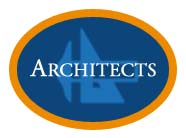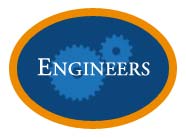The Critical Role and Future of Asset Mapping and Management in Construction
As the construction sector evolves to meet modern demands, the importance of asset mapping and management becomes ever more pronounced, paving the way for enhanced efficiency, safety, and sustainability in construction projects. This article delves into the critical role asset mapping and management plays in building construction and sheds light on the promising future shaped by technological advancements in the field.
Asset Management VS Asset Mapping
Asset management and asset mapping are related yet distinct concepts within infrastructure and construction management.
· Asset Management is the comprehensive practice of managing assets throughout their lifecycle to maximize value, encompassing acquisition, operation, maintenance, and disposal. It focuses on strategic planning, performance monitoring, financial control, and risk management to ensure assets meet organizational goals effectively and efficiently.
· Asset Mapping is a specific activity within asset management that involves documenting the geographic location, characteristics, and details of assets. It uses tools like Geographic Information Systems (GIS) to create visual representations of asset data, aiding in analysis and decision-making.
In essence, asset mapping provides the critical data and spatial insights needed for effective asset management, enabling better planning, prioritization, and response strategies. While asset mapping focuses on the “where” and “what” of assets, asset management addresses the “how” and “why” in managing those assets over time for optimal performance and value.
The Future of Asset Mapping and Management in Construction
Innovations in asset mapping and management technologies and methodologies are shaping the future of civil engineering and construction. These advancements aim to increase the accuracy, efficiency, and accessibility of asset data, thereby enhancing decision-making processes for infrastructure management and development. Here are some notable innovations:
- Integration of Internet of Things (IoT) Devices: IoT devices are being increasingly used to monitor infrastructure assets in real-time. Sensors can provide continuous data on the condition of structures, traffic patterns, water levels, and more. This live data stream enriches asset maps with up-to-date information, enabling proactive maintenance and management.
- Advanced Remote Sensing Technologies: Developments in remote sensing, such as more sophisticated LiDAR (Light Detection and Ranging) and satellite imagery, allow for the collection of high-resolution data over extensive areas. These technologies can penetrate vegetation and provide 3D models of the terrain and built environment, offering detailed insights into asset conditions and changes over time.
- Drone Surveys: Drones or Unmanned Aerial Vehicles (UAVs) are increasingly used for asset mapping due to their flexibility, cost-effectiveness, and ability to access hard-to-reach areas. Equipped with cameras and sensors, drones can capture detailed imagery and data, which can be used to assess infrastructure health, monitor construction progress, and update asset databases.
- Artificial Intelligence and Machine Learning: AI and machine learning algorithms are being applied to analyze the vast amounts of data generated by asset mapping technologies. These tools can identify patterns, predict asset deterioration, and recommend maintenance actions, thereby improving the efficiency of asset management processes.
- Digital Twins: Digital twins are virtual replicas of physical assets that can be used for simulation, analysis, and monitoring. By integrating real-time data from sensors and other sources, digital twins allow engineers to test scenarios, predict outcomes, and make informed decisions without impacting the actual infrastructure.
- Blockchain for Asset Management: Blockchain technology is being explored for its potential to improve the transparency, security, and efficiency of asset management. By creating a decentralized and tamper-proof ledger of asset data, blockchain can facilitate collaboration among stakeholders and ensure the integrity of asset information.
- Cloud-based GIS and Asset Management Platforms: The shift towards cloud-based solutions enables more scalable, collaborative, and accessible asset mapping and management. These platforms allow teams to share, update, and analyze asset data in real-time, from anywhere, enhancing the responsiveness and flexibility of asset management practices.
These innovations are not only improving the way civil engineers map and manage assets but are also driving the evolution of the entire field of civil engineering. As these technologies continue to develop and integrate, they promise to bring about more sustainable, resilient, and efficient infrastructure systems.






 We're more than just brokers. We're A/E specialists, delivering the right coverage and exceptional value and service to hundreds of design firms of all sizes. Of course we leverage the latest industry resources to provide you with coverage, risk management and contract review tailored to your practice. But we also remember the difference between simply billing clients and actually serving them. See for yourself. Contact us of a competitive quote on your professional liability insurance.
We're more than just brokers. We're A/E specialists, delivering the right coverage and exceptional value and service to hundreds of design firms of all sizes. Of course we leverage the latest industry resources to provide you with coverage, risk management and contract review tailored to your practice. But we also remember the difference between simply billing clients and actually serving them. See for yourself. Contact us of a competitive quote on your professional liability insurance.